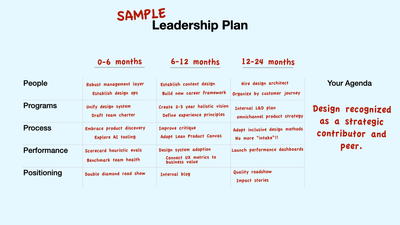The most difficult thing for a Design Executive to accept...
I'm reading The Manager's Path, an excellent book on managing technical teams, that's wholly relevant for people managing design. Towards the end, Camille Fournier addresses "The Big Leagues," and what it should mean to be a Chief Technology Officer:
First and foremost, a CTO must care about and understand the business, and be able to shape business strategy through the lens of technology. He is an executive first, and a technologist second.
It's a light edit to make this work for Chief Design Officer:
First and foremost, a CDO must care about and understand the business, and be able to shape business strategy through the lens of design and user experience. She is an executive first, and a designer second.Thing is, when I talk to CEOs, GMs, and others who are looking to hire a design executive, a common criticism I hear is that the people they talk to are designers first, second, and third.
Which, to me, is understandable. Design Leaders have had to expend so much effort fighting for their teams, their practices, their perspectives, that such a pose has become their default as organizational leaders.
However, it's holding them, and their teams, back. True design executives need to see their executive peers as their "first team," and their design organization as their second team. To be a design executive is to be an organizational leader. If you consider yourself simply the senior most design person, then you (and your team) will be constrained in its ability to make a broader organizational impact.
And I get it, this is hard. For so many design leaders, Design is core to their identity. But it's time to recognize that for design to truly earn that 'seat at the table,' design executives must, perhaps counterintuitively, make design their secondary concern.


Member discussion